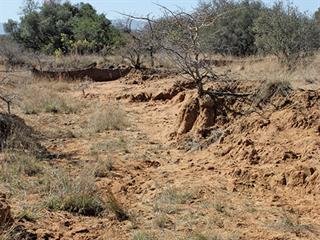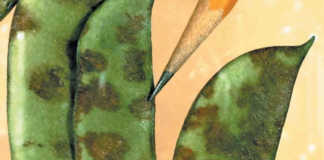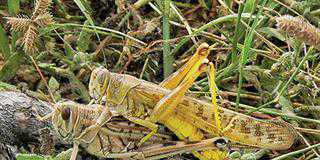
When a raindrop strikes soil that is not protected by a cover of vegetation and where there are no roots to bind the soil, it causes significant damage by loosening the particles.
These are then washed down the slope of the land, a process called erosion. Erosion removes the topsoil first. Once this nutrient-rich layer is gone, few plants will grow in the soil again.
Agricultural causes
Overstocking and overgrazing. Poor farming techniques such as deep ploughing the land two or three times a year to produce annual crops. Lack of crop rotation. Planting crops down the contour instead of along it.
Water erosion
Water erosion creates two problems: the land loses its agricultural value, and the sediment moves downstream, causing flooding and silting up reservoirs.
Sheet erosion – invisible menace
Sheet erosion occurs when the entire surface of a land is gradually eroded by thin layers of water in a more or less uniform way. This is a slow process and it is not immediately obvious that soil is being lost.
Gully erosion (dongas)
Dongas usually occur near the bottom of slopes and are caused by the removal of soil and soft rock as a result of concentrated water runoff forming a deep channel or gully. On steep land, water running downhill cuts a channel deep into the soil. Where there is a sudden collapse, a gully head forms at the lower end of the channel and gradually works its way back uphill. As it does so, it deepens and widens the scar that the gully makes in the hillside. Gully erosion is related to stream-bank erosion, in which fast-flowing rivers increasingly cut down their own banks.
Rill erosion (channel erosion)
Because no land is completely ‘flat’, water finds hollows in which to settle and low-lying channels through which to run. As the soil from these channels is washed away, miniature dongas are formed in the land.
Wind erosion
Wind erosion typically occurs on bare, flat, dry land surfaces, usually in arid regions. Many tons of soil can be blown away over several consecutive days. Land may become susceptible to wind erosion through grazing animals, which remove the protective plant cover and break up the soil with their hooves, especially around watering points. Arable land that has been left bare is also vulnerable. Like the veld in arid areas, it is also flat, dry and without plant cover, and can easily be blown away by strong winds.
Source: Directorate Agricultural Information Services, department of agriculture, in co-operation with Directorate Agricultural Land and Resources Management













